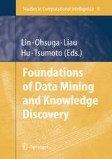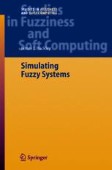Search
Search Results
-
e-Science and the Grid
Many areas of science involve access to distributed computing and data resources, specialized and expensive instruments for world-wide collaborations...
-
The Hamburg/RASS Catalogue of Optical Identifications of ROSAT Bright Source X-Ray Sources
We used digitized Schmidt direct and prism plates taken for the northern hemisphere Hamburg Quasar Survey (HQS) to obtain optical identifications for...
-
Multiwavelength Studies of Microquasar GRS 1915 + 105
The microquasar GRS 1915 + 105 has shown spectacular variability and has been extensively studied in multiwavelengths during last few years. The...
-
Equivalence of Fuzzy Subgroups of Finite Abelian Groups
In this chapter, we determine the number of fuzzy subgroups of certain finite Abelian groups with respect to a suitable equivalence relation. This is...
-
Lattices of Fuzzy Subgroups
Many results concerning relationships between classes of crisp subsets can be carried over to similar relationships between classes of fuzzy subsets....
-
Discriminative Clustering of Yeast Stress Response
When a yeast cell is challenged by a rapid change in the conditions, be it temperature, osmolarity, pH, nutrient or other, it starts a genome stress...
-
Medical Bioinformatics: Detecting Molecular Diseases with Case-Based Reasoning
Based on the Human Genome Project, the new interdisciplinary subject of bioinformatics has become an important research topic during the last decade....
-
Cluster Identification Using Maximum Configuration Entropy
Clustering is an important task in data mining and machine learning. In this paper, a normalized graph sampling algorithm for clustering that...
-
First-Order Logic Based Formalism for Temporal Data Mining*
In this article we define a formalism for a methodology that has as purpose the discovery of knowledge, represented in the form of general Horn...
-
Identification of Critical Values in Latent Semantic Indexing
In this chapter we analyze the values used by Latent Semantic Indexing (LSI) for information retrieval. By manipulating the values in the Singular...
-
A Probabilistic Logic-based Framework for Characterizing Knowledge Discovery in Databases
In order to further improve the KDD process in terms of both the degree of automation achieved and types of knowledge discovered, we argue that a...
-
On Statistical Independence in a Contingency Table
This paper gives a proof showing that statistical independence in a contingency table is a special type of linear independence, where the rank of a...
-
Justification and Hypothesis Selection in Data Mining
Data mining is an instance of the inductive methodology. Many philosophical considerations for induction can also be carried out for data mining. In...
-
Direct Products of Fuzzy Subgroups and Fuzzy Cyclic Subgroups
In Chapter 6, a necessary and sufficient condition for a fuzzy subgroup to be a weak direct sum of fuzzy subgroups was obtained by employing known...
-
From Genetic Variation to Probabilistic Modeling
Genetic algorithms ⦓GAs) [53, 83] are stochastic optimization methods inspired by natural evolution and genetics. Over the last few decades, GAs have...
-
Fuzzy Probability Theory
In this chapter we look more closely at the fuzzy binomial distribution, the fuzzy Poisson, and at the fuzzy normal,exponential and uniform...
-
Inventory Control II
This chapter continues the inventory control problem studied in the previous chapter. The new system is shown in Fig. 17.1. We have added two things...
-
Summary and Conclusions
The first objective of this book is to explain how many systems naturally become fuzzy systems. The second objective is to show how regular (crisp)...
-
Simulation Optimization
In this chapter we discuss how we plan to solve the optimization problems attached to the simulation as expressed in (5-4)-(5-5) in Chap. 5, or...
-
Machine Shop I
The queuing system in this chapter is shown in Fig. 11.1. This application was adopted from a problem in ([1], p.594). We continue this problem in...
